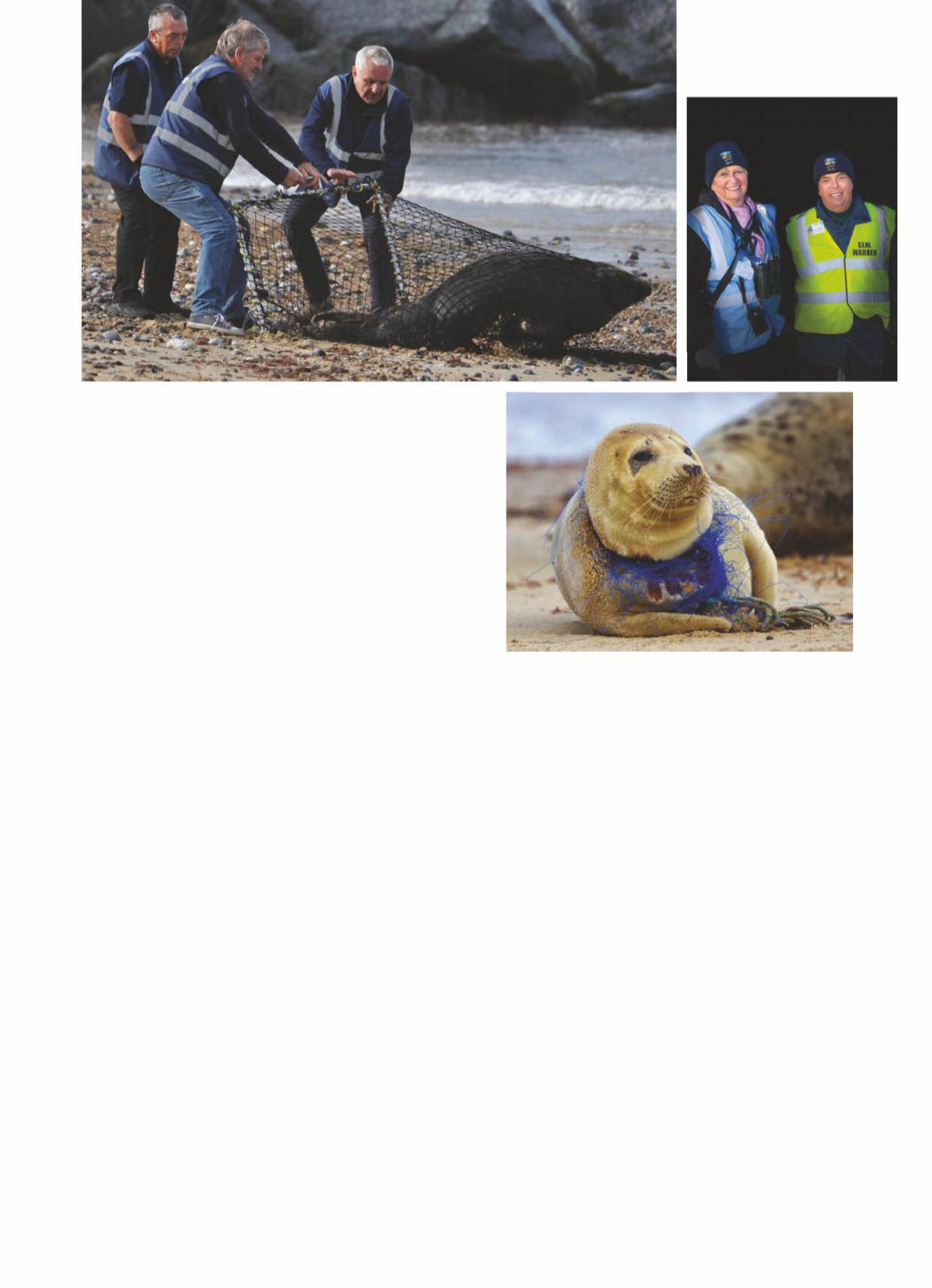
3 minute read
A few reasons why we’d love to move to Whitby
from Zzzzzxsqws
Seal rescue; Jane Bowden (left) and fellow warden Tony Chapman; an adult grey seal with netting around its neck L O C A L H E R O
❝It’s hard not to melt at the sight of a seal pup❝
Advertisement
Jane Bowden braves all weathers on Norfolk’s beaches to help protect one of the UK’s largest seal colonies
Every winter, from November to February, Horsey and Winterton beaches in Norfolk become crowded with seals, who come ashore to give birth, feed and
fatten up their pups. It has to be one of the most extraordinary natural phenomenons on earth, and it happens right here in the UK. It’s not unusual to see four or five thousand packed onto the two beaches, attracted by seas rich in sand eels. I have worked as a volunteer warden for charity Friends of Horsey Seals for four years and I am lucky enough to have seen this remarkable sight many times, and it never fails to utterly delight me.
For 25 years I worked as a radio and TV producer for the BBC, including a stint as a war
correspondent. On retirement in 2005, I moved to Florida with my husband, a helicopter pilot, where I volunteered to conserve sea turtles. When we returned to the UK, it was a joy to discover we were not far from another of nature’s wonders – one of the UK’s largest seal colonies. I jumped at the chance to join the Friends and help the seals thrive.
With their big eyes and soft white
fur, pups are so endearing. But despite the winning looks, these are far from cuddly toys; they are wild creatures. They will defend themselves from perceived predators, from dogs to humans. More than that, if people get too close, frightened mothers often flee into the sea, abandoning pups. It’s a dreadful scene when a lone seal approaches any mother it can in the hope of milk – only to be rejected and attacked. We do all we can to prevent this happening.
Every one of these pups is precious but only 50 per cent
survive more than one year. With up to 130,000 visitors to the two beaches every year, us wardens –there are 350 of us in total – have our work cut out. A major part of our role is helping everyone understand why we need to leave the animals be. But even at a safe distance, the seals provide an addictive spectacle – I always say it is like watching a soap opera. Sometimes visitors leave me their email addresses wanting to know how little dramas play out – will a pup find its mum again; will a rescued animal survive?
When an animal is in dire need of help, our RSPCA-trained rescue teams step in, and wardens like me add an extra pair of hands
when needed. One rescue I helped with was a seal with a net stuck round its neck and rear flipper. We took it to the RSPCA hospital near Fakenham where a vet removed this and discovered a deep wound where it had tightened as it grew. We carried out about 150 similar rescues last year.
Some days can be upsetting – I have never forgotten the time we
lost three pups in one day. But there were about 400 seals when the charity began its work in 2011 and by 2019 there were 2,300 pups alone, and it feels magical to play a part in that. As a former war reporter, some small part of me always has a sense of wanting to defend what is right, and this is well worth fighting for.
To find out more, visit friendsofhorseyseals.co.uk










